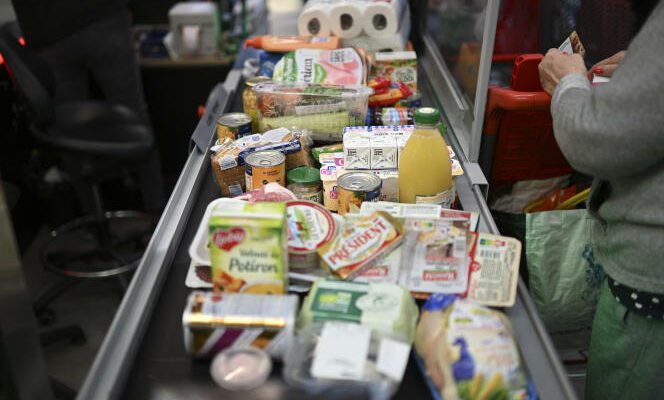According to the Ecological Transition Agency (Ademe), each year, in France, nearly ten million tons of edible food is wasted. A field in which producers, processors, distributors, restaurateurs and households are all concerned. Of these ten million tonnes lost and wasted per year, 33% are during the consumption phase, 32% during production, 21% during processing and 14% during distribution, underlines the Ademe. In an attempt to limit this phenomenon, the Ministry of Ecological Transition and Territorial Cohesion launched on Wednesday 1er mars, a national label against food waste.
This label aims to encourage the various players in the food chain who, through their efforts to raise awareness but also to train staff in particular, manage to significantly reduce their food waste, explains the Ministry of Ecological Transition and Territorial Cohesion. on his site. “The objective is to make the establishments invested more credible but also more transparent about their commitments”underline for THE World Clémentine Lindon, head of external relations for the Too good to go France “anti-waste” application, who participated in creating the audit grid.
- How did it come into being?
From the same source, it is explained that the label stems from the anti-waste law for a circular economy (AGEC) of 2020, whose objective is to halve food waste by 2025 for the distribution and catering sectors. collective, and by half by 2030 for the other players in the food industry.
Alongside the French Association for Standardization (Afnor) and Ademe, large retailers, food and humanitarian aid associations and anti-waste actors have been asked to give birth to this label, says Clément Carreau, head of public affairs for the anti-waste start-up Phenix.
As the ministry reminds us, the first players concerned by this label are large and medium-sized stores (supermarkets and hypermarkets), wholesalers and catering trades (butchers, delicatessens, bakers, cheese makers, greengrocers).
“Secondly, this label should be extended to the collective and commercial catering sector, then to the food industry”emphasizes Clémentine Lindon.
- How does it work ?
The national anti-food waste label is based on seventeen criteria, divided into four categories: cross-functional performance, which assesses the action plan and analysis of the store’s breakage rate; the management of the supply, purchase and manufacture of foodstuffs; the management of these foodstuffs in store; and, finally, the management of unsold items, with an emphasis on the prioritization of the donation as well as its quality.
A model similar to ” driver’s license “ with different points awarded – some with coefficients, as Clément Carreau explains.
Thus, commitment to the fight against food waste will be rewarded with one star, two stars for mastery of the fight against food waste, while three stars will reward the establishment that has reached an exemplary level in the fight against food waste.
- Who will be responsible for issuing the label?
The label will be certified by independent companies specializing in auditing, such as Bureau Veritas or Ecocert, approved by the State.
The World Buying Guides
Reusable water bottles
The best water bottles to replace disposable bottles
Read
“As part of a continuous improvement process, the renewal of the label will take place every three years”, specifies Clémentine Lindon. A store can therefore win or lose stars, or even have the label withdrawn in the event of breaches.
All establishments can apply, alone or in a group, specifies the ministry.
- When will we see the first certified establishments emerge?
In view of the necessary audit procedure, the first stars will not be affixed to the storefronts of establishments before ” several months “predicts Vincent Justin, co-founder of the Us store network, anti-gaspi grocery stores.
The latter, who also participated in the development of the label, is aware of the difficulty of making it known. The network of stores he co-founded “will play the game” and will ask to be audited to get as many stars as possible.
- What can be the limits of such a label?
As Vincent Justin notes, one of the difficulties that the smallest structures could encounter lies in the financial means necessary to mandate the companies responsible for the certification to be renewed every three years.
In addition, the co-founder of Nous, épices antigaspi reminds us that for a label to gain visibility and credibility, the biggest players in the sector must be involved. At the risk of seeing the rules relaxed later to please the greatest number. “There is always a balance to be found between the requirements linked to the establishment of a label and the credibility conferred by the entry into play of major players in the sector. We are facing a climate emergency, we have no time to procrastinate. Getting the big distributors to move is already a small victory. »
